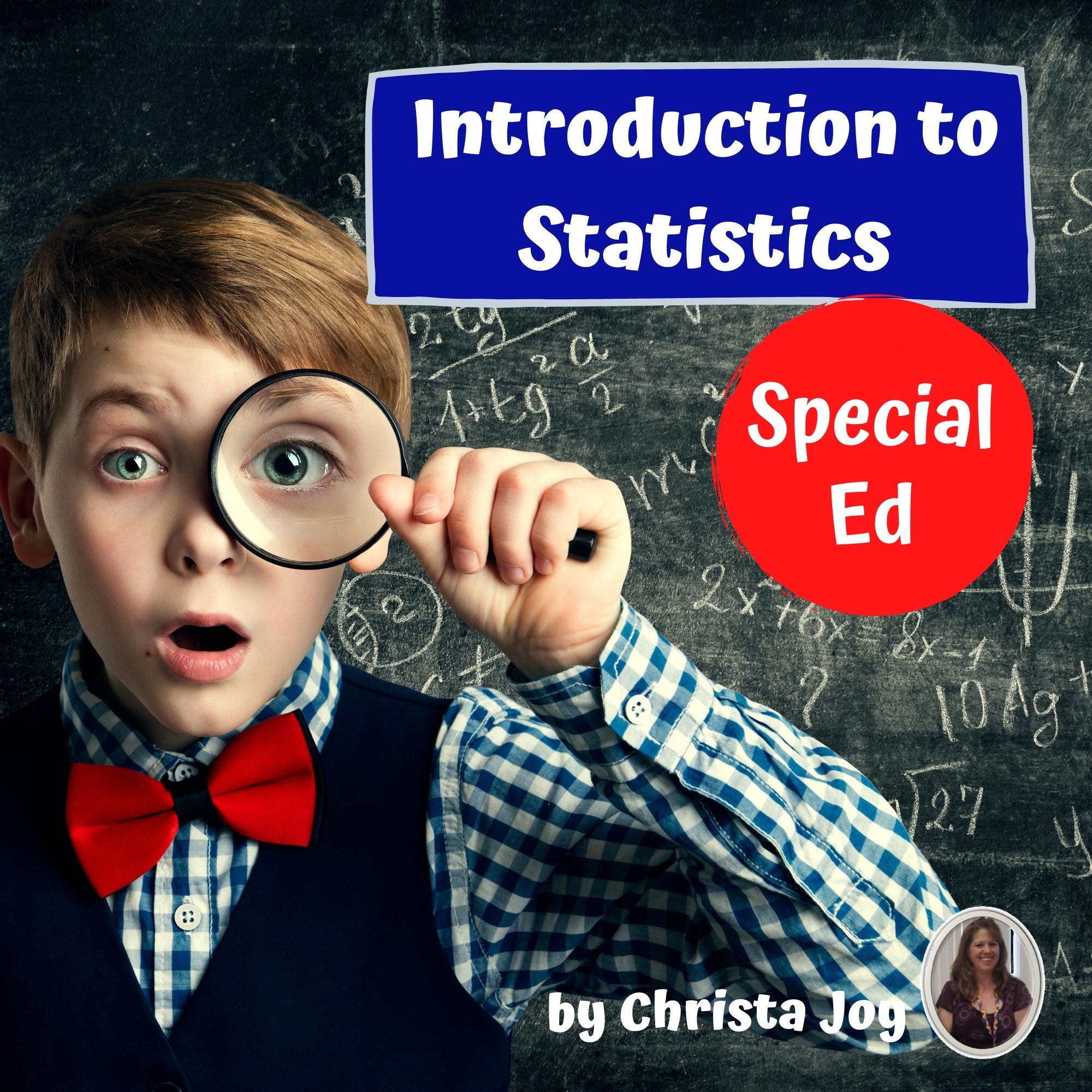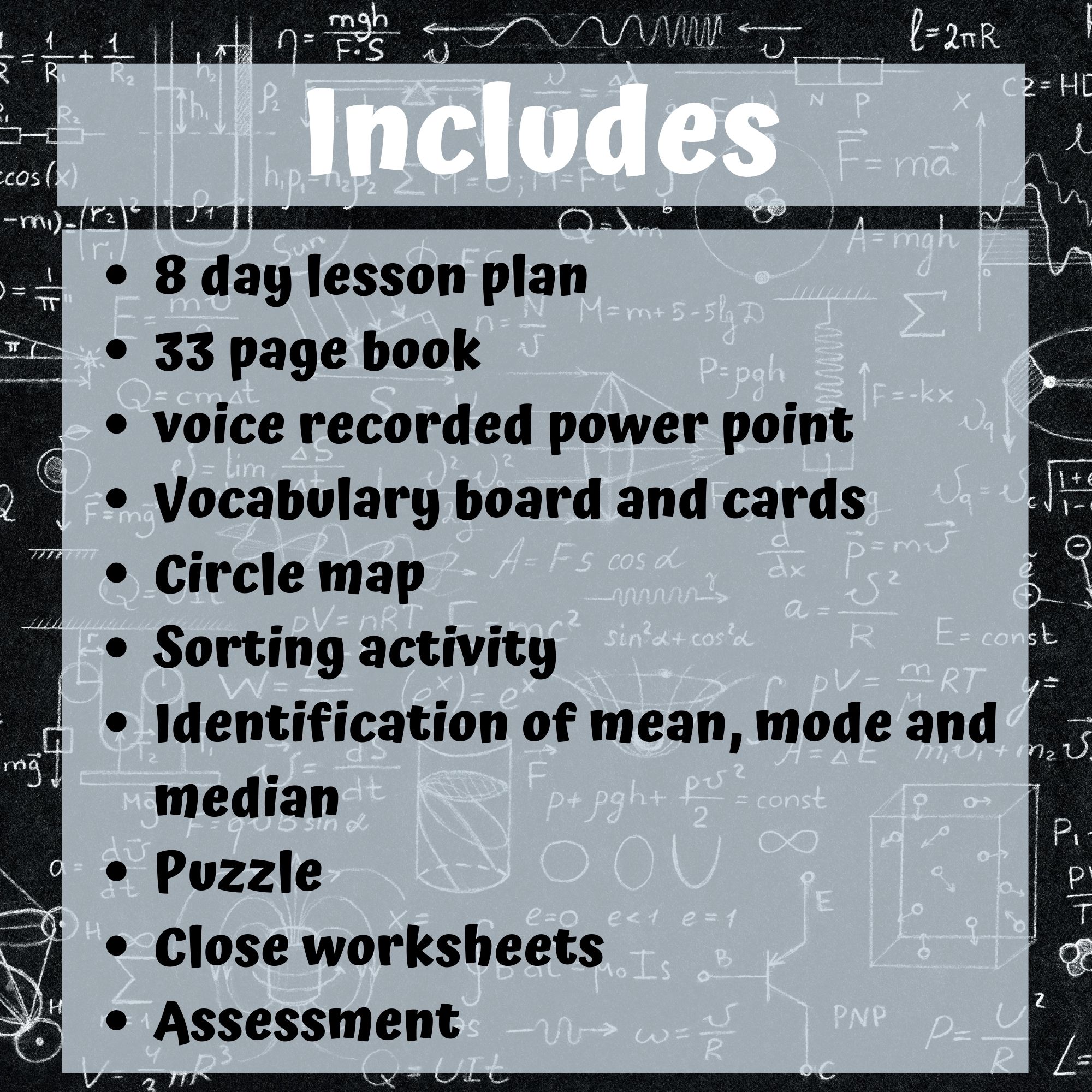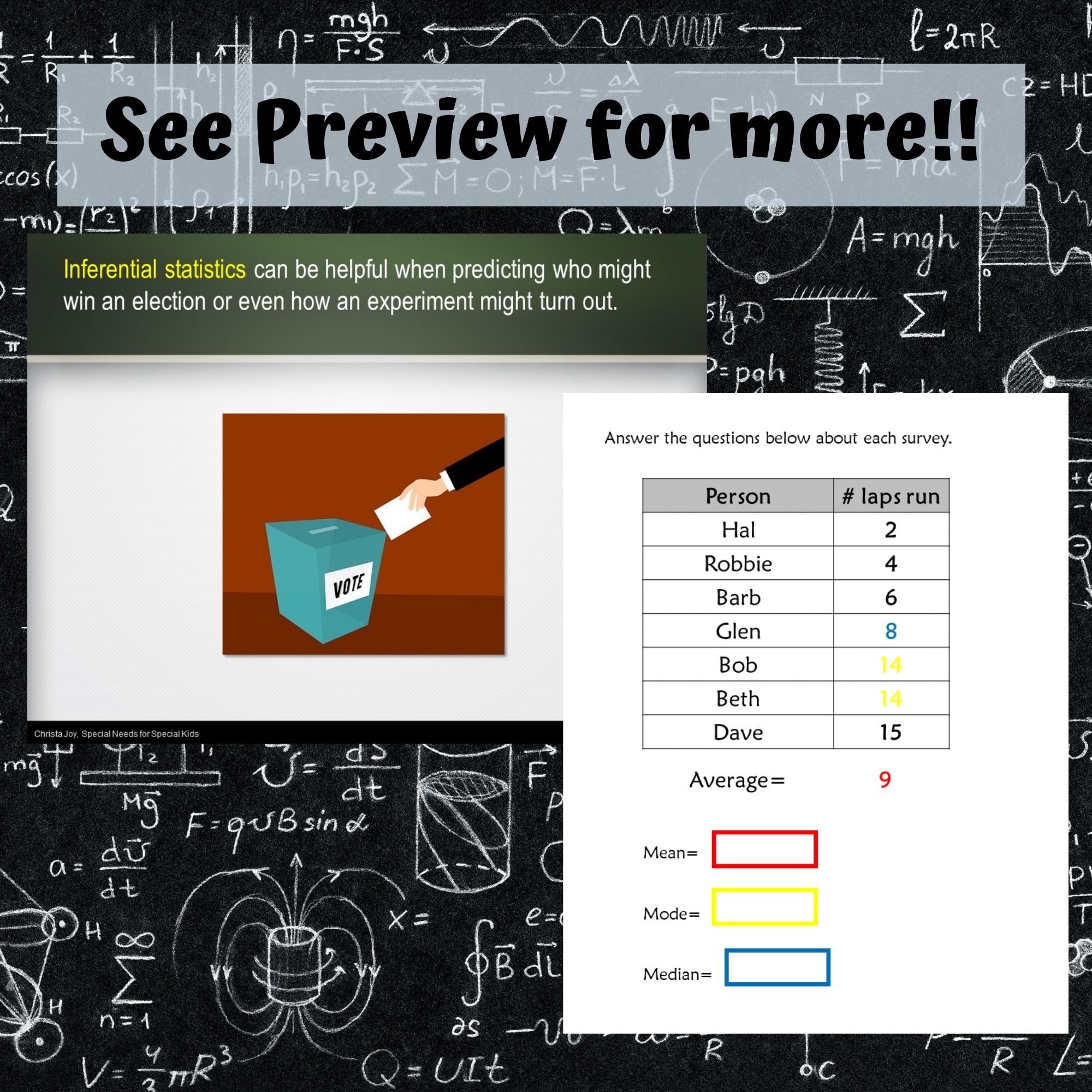Introduction to Statistics for Special Education with digital activities
CLICK HERE FOR PREVIEW OF PRINTABLE MATERIAL
CLICK HERE FOR PREVIEW OF DIGITAL ACTIVITIES
$10.00
This unit is an introduction to Statistics and has over 100 pages and 42 google slides of material specifically designed for students with special learning needs, especially autism who are in middle and high school. This unit focuses on some of the main concepts in statistics as well as the vocabulary like mean, mode, and median. There are differentiated versions of the worksheets that use color coding. There are lots of ways for students to practice these skills in this unit even if they are at different levels. This is the perfect way to lead into some of my more in depth statistics units (see below).
****This unit now includes 42 google slides (including a differentiated set) and a movie version of the book included.
See the preview for a more detailed look at the contents.
*****************************************************************************
Introduction to Statistics Unit Includes:
- 8 days worth of detailed lesson plans
- 33 page book with recorded power point (includes movie version)
- Vocabulary board
- 12 Vocabulary cards and cut/paste activities (includes digital version)
- Circle map on statistics (includes digital version)
- Sorting examples of descriptive vs inferential statistics (includes digital version)
- Worksheets identifying (not calculating) mean, mode and median from a data set as well as from survey results (includes digital version)
- Close worksheets to review concepts (includes digital version)
- 2 Sudoku puzzles (includes digital version)
- Assessments (3 versions) (includes digital version)
Most activities (not book) are in color and BW.
*****************************************************************************
Much of what I have learned about curriculum development is incorporated in these units. For example, do not be afraid of repetition. It is critical that students with significant disabilities get to experience material over several days to be able to fully assimilate what is being taught. Also, adding visual supports to your printables and class activities helps students be able to pay more attention to the content you are presenting rather than the mechanics of what is expected. Finally, ask questions. Good questions!! Regardless of the material, if we can ask students good questions it will push them to think more deeply than before.
♥As always please take a moment to leave feedback or post any questions you may have.
♥I am currently developing more units, and any feedback I get helps me make improvements in the future. Plus, it just means a lot to me.
I have an entire series in statistics if you are looking to go deeper:
- Central Tendency: Mean, Mode and Median
- Dot Plots and Histograms
- Scatter Plots
- 2-Way Frequency Tables
- Creating and Conducting Surveys
- Probability
$10.00
Lorem.



